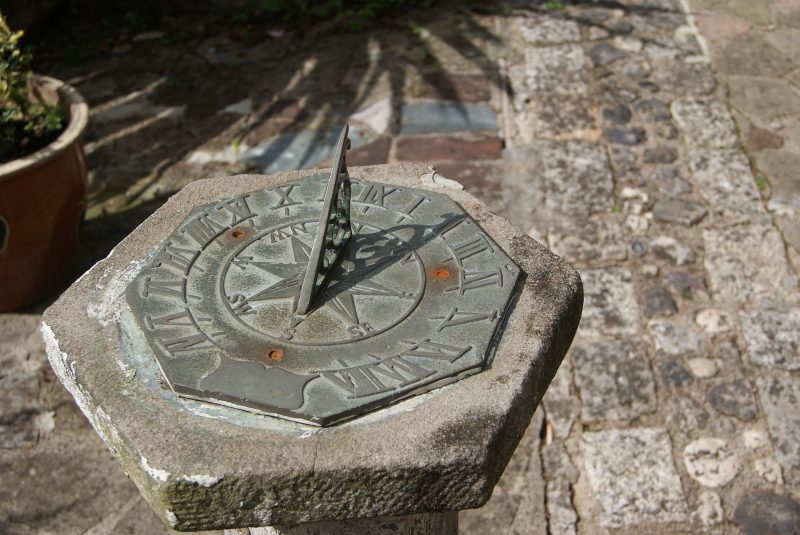Two techniques for telling time without a watch
For us to tell the time in our day-to-day lives, all we have to do is check our phones or our wristwatch. It’s important to be able to know the time during the day and it will be no less important in a survival situation. Hopefully, you will already have a watch with you in a survival situation, but if you don’t or if the one you do have is broken, there are a few reliable ways that you can use to tell the approximate time.
There are many different reasons why you would need to know the time of day in a survival situation. Maybe you’re coordinating a hunting effort with your group and decide that you will meet back at your original position at a specific time during the day. Or perhaps you are boiling water or cooking food, you’ll need to keep track of time so that you know how long you have been boiling the water or cooking the food for.
Plain and simple, telling the time without a watch is an important skill to have. None of the methods that we will teach you can tell you the exact time of day, but they do come close and that should be good enough for most needs while stranded out in the wilderness.
Here are ways to tell the time without a watch:
Telling time by the sun

We all know that the sun rises in the east and sets in the west. Each day between sunrise and sunset lasts around twelve hours, or it takes twelve hours from the sun to go from the east to the west. This means that when the sun is directly over you, you know that it’s approximately noon. From this point, knowing that the sunrise to the east of you is approximately 6 am, the sun directly above you is approximately noon, and the sunset to the west of you is approximately 6 pm, you can then figure out where the rest of the hours are.

For example, if the sun is about midway between the eastern horizon and where it would be directly above you, that means that it’s approximately 9 am because that’s between 6 am and noon. You can then continue to divide the east and the west between the locations of the sun to figure out your approximate hours of the day.
While this method of using the sun does not give you the exact time, it does give you an approximate time and if you’re talented at dividing the sky, you should be able to calculate the time to every fifteen minutes or half hour.
The stars

Another method of telling the time without a watch is to use the stars. The stars in the Northern Hemisphere are typically better for telling time than the ones in the Southern Hemisphere. Obviously, you will use the stars for telling the time at night, while the sun method is used for telling the time of the day. Using the stars to tell time will require you to use the North Star and the Big Dipper. The reason why we need to use this to tell time with the stars is that the Big Dipper is always visible throughout the year.
To use the stars to tell time, you will need to create an imaginary clock in the sky while using the North Star and the Big Dipper. Locate the North Star and then use the North Star as the center point of your clock. The North Star is the brightest star in the sky and is ninety degrees overhead of the North Pole. This means that if your position is thirty-five degrees North latitude, then the North Star is thirty-five degrees from the horizon.
If you are having trouble finding the North Star on your own, you can also find it by first locating the Big Dipper. The Big Dipper has two outer stars that point in the direction of the North Star. If you draw a line that connects the two stars and then leads into the sky, you will definitely find the North Star.
Next, draw a line from the North Star through the middle of the Big Dipper’s two pointer stars. This will serve as the hour hand. Then draw another line directly up from the North Star to create your reference line. This imaginary star clock of yours will be unique because the hour hand will move in a counterclockwise direction. Every fifteen degrees is equal to one hour, and this is very important for the purposes of telling time.

With your reference line and hour hand drawn, all you have to do is look at where the hour hand is pointing to and compare its position to the reference line. Then add up the approximate number of degrees between the reference line and the hour hand to calculate the hour.
After this, calculate the number of months since March 6th and multiply that number by two. Subtract this resulting number from the number of hours that you calculated on your imaginary clock, and you will have the approximate time. As with the sun, it won’t be entirely accurate, but it will give you an idea of what time it is.
Conclusion
The next thing for you to do is to go out and test these methods on your own. You don’t want a real survival situation to be the first time that you use these methods, which is why practicing on your own first is imperative. Fortunately, you can easily practice both of these methods out in your backyard. All that you need is a sunny day and a starry night to do it.
If you have any comments then please drop us a message on our Outdoor Revival Facebook page
If you have a good story to tell or blog let us know about it on our FB page, we’re also happy for article or review submissions, we’d love to hear from you.
We live in a beautiful world, get out there and enjoy it. Outdoor Revival – Reconnecting us all with the Outdoors.





